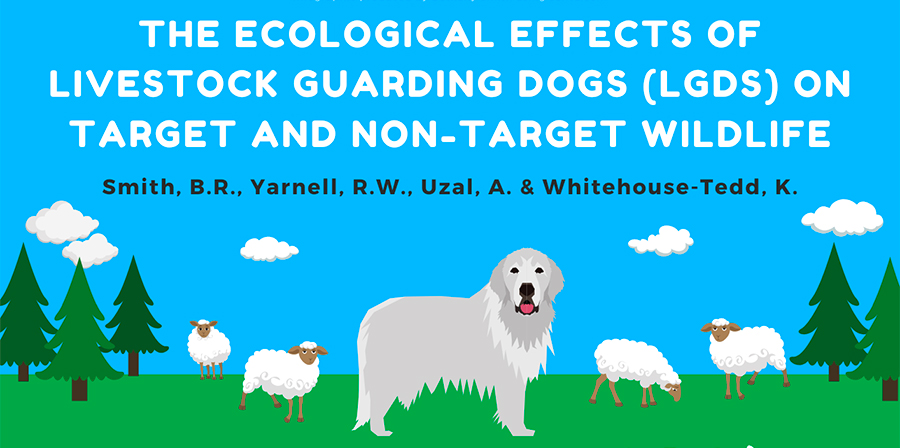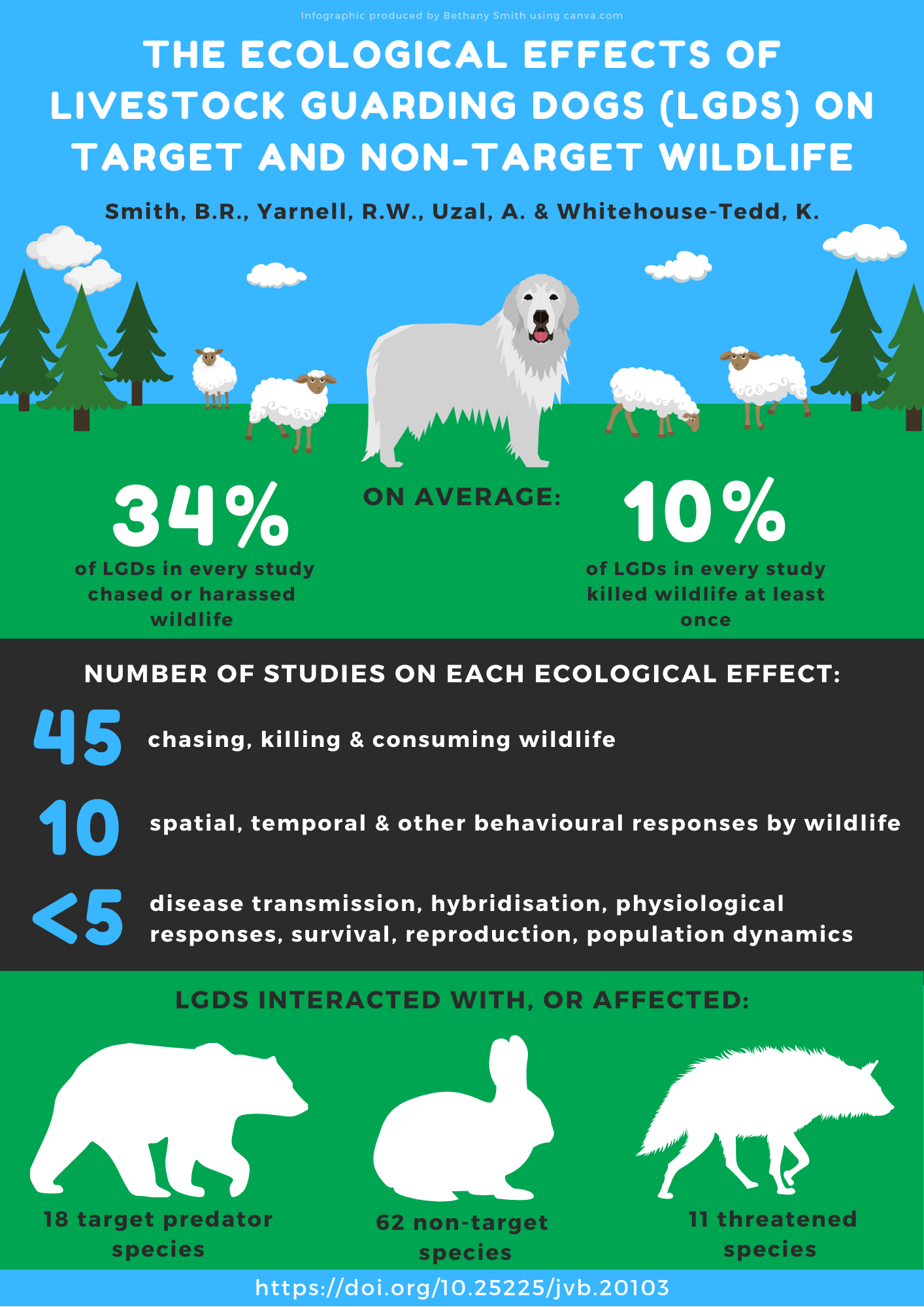
18 Jan 2021 Conservation benefits of livestock guarding dogs challenged by scientists
Livestock guarding dogs (LGDs) are used across Europe to reduce attacks on livestock by predators, such as the wolf or bear. As a non-lethal option for large carnivore management, LGDs are considered beneficial for conservation. However, LGDs can cause various unwanted ecological effects. Recently, several studies assessed the effect of LGDs on local ecosystems and the beneficial use of these dogs has been challenged.
Based on a literature review, a total of 80 animal species were reported to be affected by LGDs globally. Of these, 62 species were non-target species and are partly listed as “Near Threatened”, “Vulnerable”, or “Endangered” on the IUCN Red list, Smith et al. 2020.

Potential LGD’s effects on target and non-target species include:
- chasing and killing;
- indirect interactions due to auditory, olfactory or visual cues;
- LGD-mediated behavioural and physiological responses;
therefore, resulting in unwanted ecological costs.
Thus, before defining LGDs as a beneficial conservation tool and facilitating human-predator coexistence, their direct and indirect effect on animal species must be empirically and locally assessed. This is particularly important when animal species of conservation concern are affected by LGD-wildlife interactions.
FACE therefore highlights the need to carefully consider the wide promotion of LGDs, as an appropriate tool for decreasing livestock predation and protecting wildlife.
To help preserve pastoral livelihoods in Europe and its the landscapes and habitats they maintain, a more holistic approach is needed. This will secure a wider range of benefits for people and biodiversity. Finally, this clearly shows that more research is needed in order to determine the ecological effects of LGD’s use and to minimise negative outcomes.

